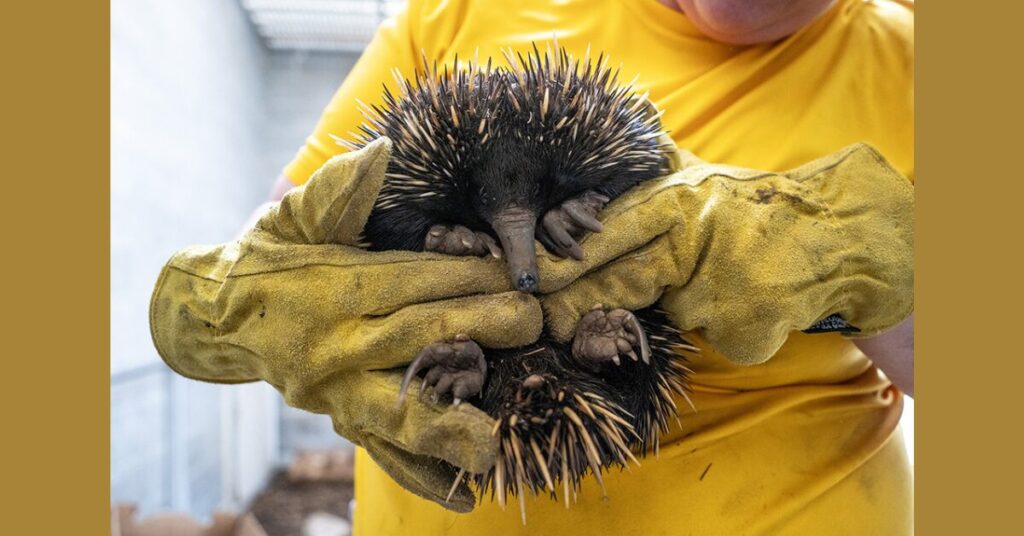The Potawatomi Zoo has a new ambassador animal.
Teddy, the short-beaked echidna, recently moved to the Potawatomi Zoo from another Association of Zoos and Aquariums-accredited facility.
“It’s pretty exciting to have this incredibly unique species at the Zoo,” said Josh Sisk, Potawatomi Zoo executive director, in a press release. “There are fewer than 15 accredited zoos in North America with echidnas, and we feel very lucky to be one of those zoos.”
As an ambassador animal, Teddy is not in a publicly-visible exhibit. He may be part of education classes and programs at the zoo or offsite. He may also be part of a breeding program in the future, since echidnas are so rare in zoos.
Short-beaked echidnas are native to Australia and New Guinea. They are monotremes, mammals that lay eggs instead of live young. Echidna mothers lay eggs into a small, backward-facing pouch. When they hatch, their babies are called “puggles.”
Echidnas are covered with fur that can range from reddish to dark brown color. The spines on the backs of echidnas are modified hairs that vary in color from cream to black. Each spine of the echidna is formed from a single hair, and they can reach up to two inches long.
The echidna uses all four feet to dig. The front feet of the echidna have five flattened claws, designed to dig burrows and tear open logs and termite mounds. Their hind feet point backwards enabling the soil to be pushed away when burrowing. They also use their back claws for grooming.
Although short-beaked echidnas are considered least concern for extinction by the International Union for Conservation of Nature, their numbers have dwindled in the last few decades due to vehicle strikes and predation by cats and dogs.
In 1921, the Potawatomi Zoo was established in Potawatomi Park, where it continues to exist today. It is home to over 400 animals.




